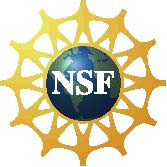

Planktonic Archaea in Great Lakes
Our labs recently reported finding nucleic acids from archaeal prokaryotic microbes (Keough et al, 2003. Microb. Ecol. 46:238-248; Pascoe and Hicks. 2004. J. Great Lakes Res. 30:185-195) and crenarchaeal GDGT membrane lipids (Powers et al. 2004. Geology 32:613-616) in the water and sediments of great lakes on several continents. The recent establishment of a relationship between these membrane lipids and mean annual lake surface temperature provides a powerful paleoclimate tool, but very little is known about the ecology of the archaeal microorganisms that produce them. This research is linking the production of these GDGT membrane lipids with specific aspects of the ecology of archaeal communities in the water columns of Lake Superior (North America) and Lake Malawi (East Africa). We are sampling and isolating prokaryotic cells and settling organic matter in these lakes, extracting and amplifying nucleic acids, and using quantitative hybridizations, terminal restriction fragment length polymorphism (T-RFLP) DNA fingerprinting, and cloning and DNA sequencing to compare the diversity of these archaeal communities. This is an oceanographic scale project that uses large moored sediment traps to collect settling particles colonized by bacteria. Fieldwork started in fall 2005 and will continue for the next three years. We are collaborating with Dr. Joe Werne's lab group at the UMD Large Lakes Observatory on this project.
The National Science Foundation is supporting this research.
For Prospective:
